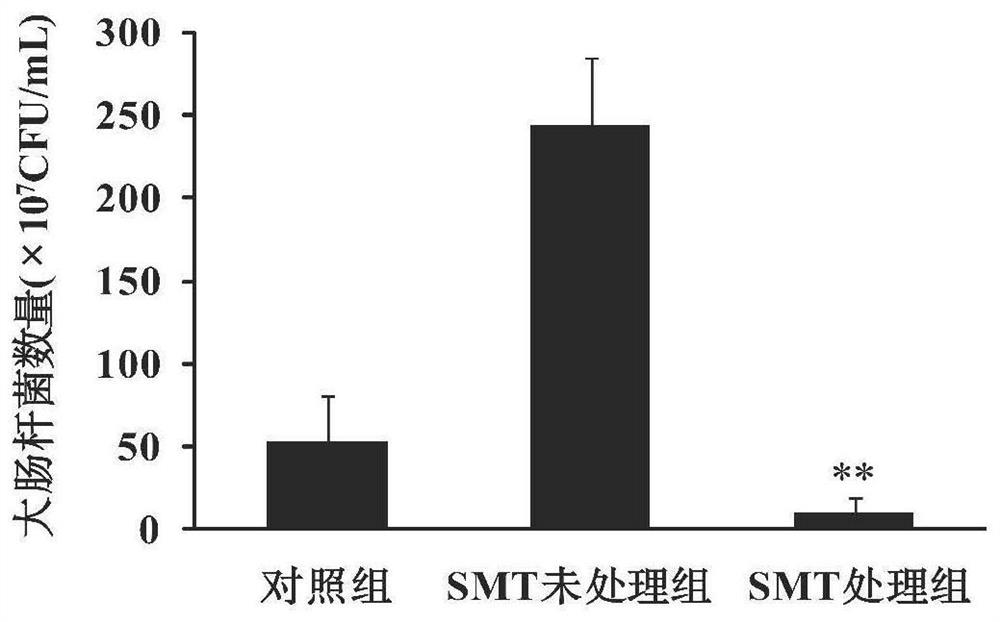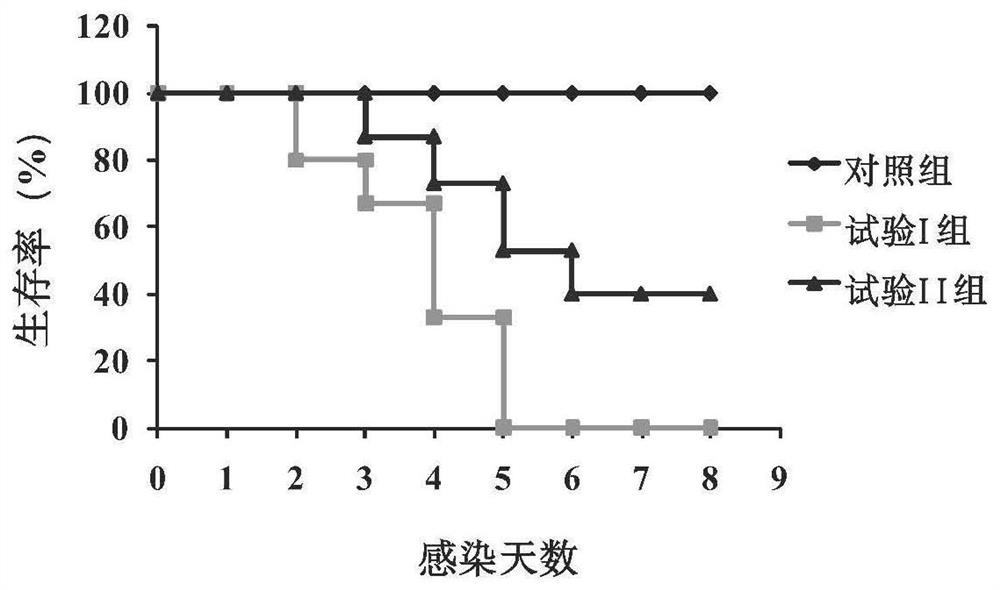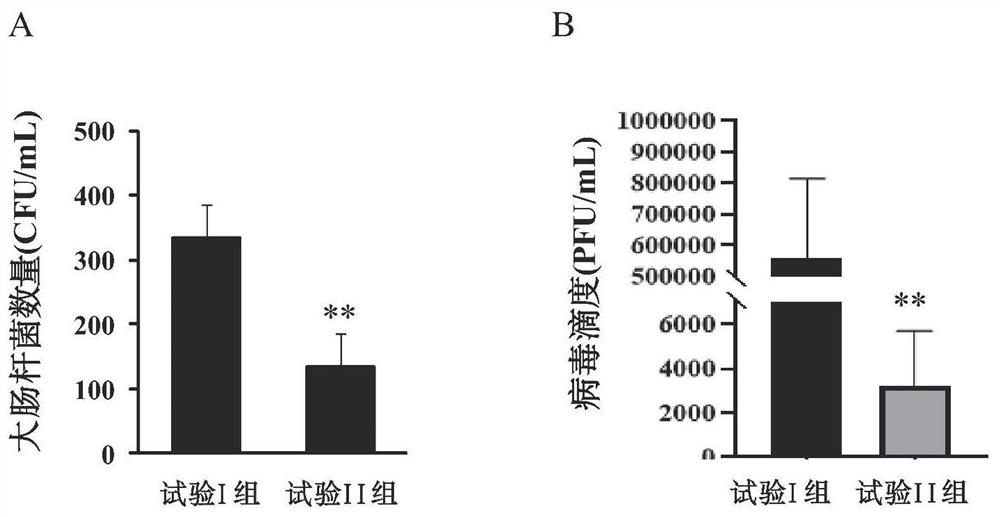Application of S-methylisothiourea sulfate in preparation of anti-influenza virus and escherichia coli co-infection drugs
A methylisothiourea sulfate, anti-influenza virus technology, applied in the direction of antiviral agents, antibacterial drugs, resistance to vector-borne diseases, etc., can solve the problems of easy invasion of Escherichia coli, respiratory system damage, secondary infection , to achieve the effect of reducing the viral and bacterial load in the lungs, enhancing the resistance and improving the survival rate
- Summary
- Abstract
- Description
- Claims
- Application Information
AI Technical Summary
Problems solved by technology
Method used
Image
Examples
Embodiment 1
[0027] Example 1: The compound S-methylisothiourea sulfate can inhibit the proliferation of Escherichia coli in the case of mixed infection at the cellular level
[0028] Inoculate an appropriate amount of MLE12 cells into 9 T25 cell flasks, and infect the H9N2 influenza virus when the confluence of the cells is 90%-100%. Wash the cells 2-3 times with PBS, then add 2 mL of virus maintenance solution (2 μg / mL trypsin in DMEM without serum and double antibody), and add 30 μL of H9N2 subtype influenza virus (MOI=1) to 6 cell flasks. Then place it in a cell culture incubator at 37° C., saturated humidity, and 5% CO2 concentration for 1 hour, during which the cell bottle is shaken every 15 minutes. After 1 hour, the virus maintenance solution was discarded, and the cells were washed again with PBS for 3 times, and 8ml of fresh virus maintenance solution without double antibody was added to the cell bottle, and the final concentration of 1mM S was added to three of the cell bottles ...
Embodiment 2
[0029] Example 2: Compound S-methylisothiouronium sulfate (SMT) can enhance the resistance of mice to the mixed infection of H9N2 subtype influenza virus and Escherichia coli
[0030] 1. Grouping and handling of test animals
[0031] Select 60 SPF grade BALB / c female mice aged 6 weeks (purchased from Shanghai Slack Experimental Animal Co., Ltd.), and randomly divide them into 3 groups, which are normal non-challenge group (control group); H9N2 subtype influenza virus and large intestine Bacillus mixed infection-S-methylisothiouronium sulfate untreated group (test group I); H9N2 subtype influenza virus and Escherichia coli mixed infection-S-methylisothiourea sulfate treatment group (test II group), 20 in each group. The mice in the test group I and the test group II were pretreated with ultrapure water and S-methylisothiouronium sulfate (20 mg / kg / mouse) for 24 hours respectively, and then each group was given nasal drops of H9N2 subtype influenza virus (5× 104PFU) and Escheri...
PUM
 Login to View More
Login to View More Abstract
Description
Claims
Application Information
 Login to View More
Login to View More - R&D
- Intellectual Property
- Life Sciences
- Materials
- Tech Scout
- Unparalleled Data Quality
- Higher Quality Content
- 60% Fewer Hallucinations
Browse by: Latest US Patents, China's latest patents, Technical Efficacy Thesaurus, Application Domain, Technology Topic, Popular Technical Reports.
© 2025 PatSnap. All rights reserved.Legal|Privacy policy|Modern Slavery Act Transparency Statement|Sitemap|About US| Contact US: help@patsnap.com



